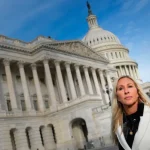

(The Center Square) – The pandemic-era fiscal Band-Aid keeping Pennsylvania’s checkbook balanced has all but fallen off, according to a recent analysis.
The Pew Charitable Trusts said earlier this week Pennsylvania is among the most populous states with a glaring structural budget problem, thanks in part to waning COVID-19 federal support.
The temporary boost meant states spent money and cut taxes at record rates and now face sustainability problems.
A report compiled by the National Association of State Budget Officers, found Pennsylvania, too, boosted expenditures 16% in 2022, 3.7% in 2023 and 10.2% in the 2024 enacted budget. Only the latter exceeded the national median, by 3.7 percentage points.
Pennsylvania, according to the association’s data, lowered some spending through hiring freezes, staff attrition, pension adjustments and other targeted cuts. Surpluses left over from years prior also supplanted the expenditure growth.
Matthew Knittel, executive director of the Independent Fiscal Office, told The Center Square that internal estimates show the state will carry a shortfall of roughly $0.7 billion in the coming year.
“As noted by the Pew article, unlike recent years, it is recognized there is a budget shortfall this year, that will use surpluses from prior years to fund,” Knittel said. “There is no disagreement about that.”
He also supports Pew’s conclusion that many states do not publish “sufficient forward-looking data” to provide meaningful assessments of their fiscal outlooks. As such, the number of states facing long-term structural problems may be undercounted.
“State long-term budget outlooks have been an emphasis of Pew, but many don’t do it,” he said. “Long-term outlooks are a way to identify budget stress and also to facilitate thinking about how long-term trends, such as the aging of the state population, will impact future budgets.”
Pennsylvania’s structural imbalance, however, isn’t new. For nearly a decade, Knittel’s office has consistently tracked state spending that outpaces revenues. It’s not a “unique” position to be in, either.
“Nearly all states have a significant budget surplus from prior years, but have long-term shortfalls, and for many, current year shortfalls,” Knittel said. “The only way to address structural deficits is to cut spending or raise taxes, or both.”
Knittel added that state policies have a “limited impact” on economic growth, so beyond those measures, little else exists to close the gap.
“States currently have some flexibility due to unprecedented rainy day funds, but most will need to address these issues in the next year or two,” he said.
Pennsylvania’s rainy day fund – a de facto emergency savings account – holds $6.1 billion, the majority of which came from unspent pandemic aid.
The IFO’s most recent five-year economic and budget outlook, however, projects the structural deficit – which could exceed $4 billion in 2028 – would all but drain the account.
The combination of declining revenues, due in part to the state’s reduction of its corporate net income tax rate, along with lower Treasury collections and shrinking corporate profits, will widen the deficit. Spending will also rise for long-term care for disabled residents and those 75 and older.







